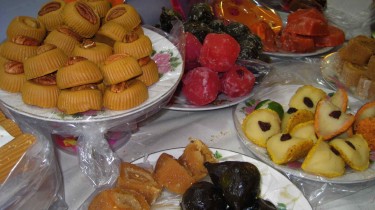Day of the Dead is a special and mystical season that Mexicans celebrate every year. But what exactly happens on this date? Why is this holiday so important for Mexican families?
Chase Buckner wrote a post on “Day of the Dead in Mexico” in Journey Mexico: The Blog:
Day of the Dead, or Dia de los Muertos, is an often misunderstood holiday celebrated in Mexico. While, technically speaking, the actual Day of the Dead is November 2nd, the tradition has evolved to also include October 31st and November 1st as well.
November 1st is traditionally referred to as Dia de los Angelitos (Day of the Little Angels) in Mexico and is the day to honor infants and children who have died. November 2nd is the actual Dia de los Muertos when families honor adults whom they have lost. It is believed that on these days, the souls of the deceased return to earth to be with their families and loved ones.
Chase Buckner goes on to name some of the elements that are used in this celebration:
It is important to note that the celebrations for these holidays, especially for Dia de los Angelitos and Dia de los Muertos, vary widely throughout the different regions of Mexico. In some areas, the cemetery plays a larger role in celebrations than in others where the home is the center of celebrations where alters and shrines are built. The favorite food and beverage of the deceased are often taken to graves and alters to honor the dead and in some regions, people celebrate the loss of children by hosting dinners consisting of specific foods and sweets.
Buckner concludes by writing about other significant components of the holiday, such as La Catrina and the Calaveritas, among others:
The mood of these holidays will also vary from grievance to humorous are relatives reminisce about funny events and anecdotes of the deceased. One of Mexico’s most prominent symbols of Dia de los Muertos, the Catrina figures (little statues of skeletons dressed in formal clothing), began from a printed parody poking fun at an upper class Mexican female, and there is another tradition where people write short poems called calaveras (“skulls”), which are mocking epitaphs poking fun at the quirky habits or funny events of the deceased and their past.

La Calavera Catrina ("The Elegant Skull") image by Wikimedia Commons user Tomascastelazo used under a Creative Commons Attribution-Share Alike 3.0 Unported, 2.0 Generic license."
It is very common for Mexican families to built their own altars or small shrines in their homes, as they believe that the soul of their beloved deceased will come that night and take the essence away from the things they place in the altar. Judy King in Mexconnect explains the significance of the objects that are included in the altars:
Four candles are placed on the top level to represent the cardinal directions. A candle is lit for each dead family member, and one extra so that no one is left out. The candles, which represent hope and faith, burn during the night, so that there is no darkness …
While most altars are laden with the favorite foods, sweets, drinks, and harvest fruits of each family spirit, even the most basic altar includes these basic needs:
- WATER to quench the thirst and for purification
- SALT to season the food and for purification
- BREAD to represent the food needed for survival
A washbasin, soap, towel, mirror and comb are placed nearby so the spirits can clean up when they return.
The hand crafted skeletons, Calaveras are funny and friendly rather than frightening or spooky. They represent the beloved dead ones, their occupations and hobbies. As they are placed on the altar, the delightful skeleton figures bring back fond memories and cause the grieving ones to smile. The figures with the smells of favorite foods, help the spirits find the right house.
Blogger Gin Hindew 110 from the blog De La Tierra al Cielo [es] explains what these altars represent:
El altar es un lugar especial, algo sagrado en medio de nuestra casa, es el recuerdo de nuestros muertos, la forma física de nuestra tradición, es algo que se les enseña a los niños para que no olviden, algo que acerca a nuestros ancianos con sus recuerdos, el altar es nuestra forma de ser parte de algo mas, no es porque tenga flores ni porque tenga comida, es porque nosotros lo hemos puesto ahí, nosotros queremos recordar, queremos pensar que nuestros muertos nos acompañan
In a city near Mexico City, called Toluca, the Alfeñique fair takes place every year; vendors sell traditional sugar skulls, as well as a big variety of seasonal homemade candy. The blog One Lucky Life, shows pictures of some traditional Day of the Dead candy:











6 comments
Thanks for the mention Andrea! Your photos are awesome; where did you take them? I’ll link up this post and your post at One Lucky Life in our post.
Dear Chase! Thank you for the comments!
I took the pictures in Toluca, at the traditional FERIA DEL ALFEÑIQUE!
I know, all of the traditional candies and sweets are very artistic!
I hope with this article, as well as yours, people will get to understand better Mexican Day of the Dead Celebration!
Hi! I like this post report.. I’m just glad you took the time to show a little of the Mexican tradition.
Have a great one!
Here are 2 videos with some pics about it.
http://www.youtube.com/watch?v=Wa1xqTBCZog
http://www.youtube.com/watch?v=2Sk0o182YAA
http://www.youtube.com/watch?v=SCgGit6LSfw